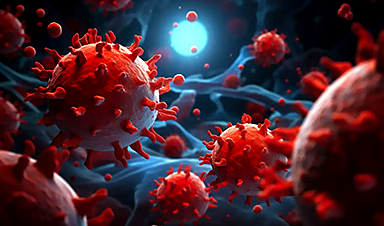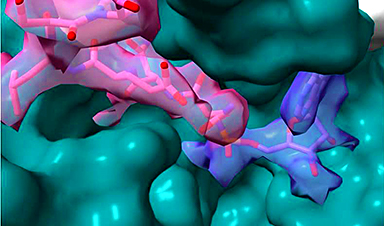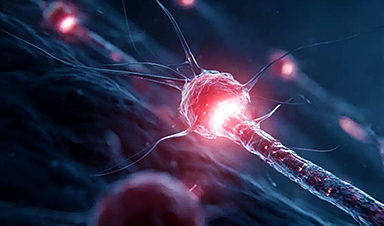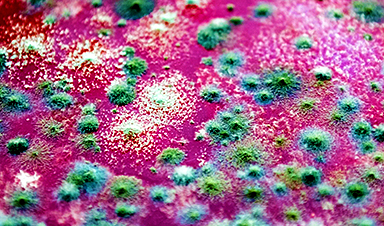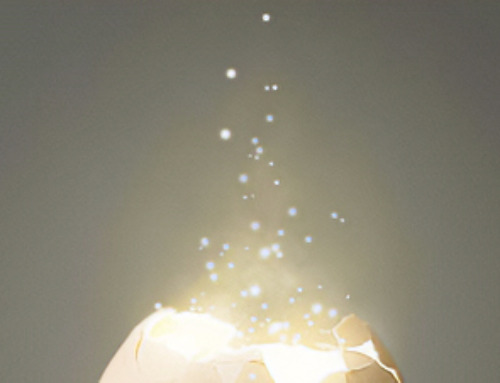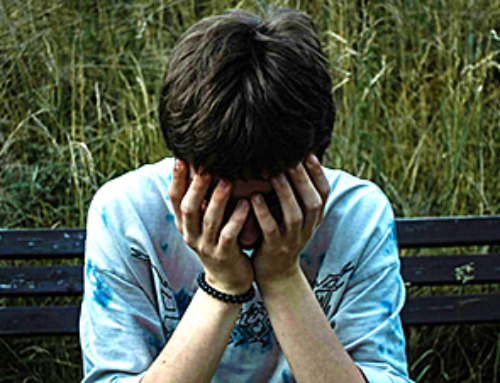Most cancers become deadly by maintaining a low profile, only showing symptoms when they’re too advanced to treat. Ovarian and gastroesophageal cancers are among the most notorious for this sly disease progression, often leading to late-stage diagnoses.
Now an international team of researchers, including from The Rockefeller University’s Laboratory of Cellular and Structural Biology, have developed a highly sensitive blood test capable of detecting a key protein produced by cancer cells that shows promise for early detection. The findings were recently published in the journal Cancer Discovery.
Unlike many cancer tests that are limited in scope, expensive, or rely on invasive tissue sampling, this new method is a low-cost, multi-cancer detector that can pick up the presence of the telltale protein, known as LINE-1-ORF1p, in a tiny amount of blood in less than two hours.
Genetic copy and paste
Cancer biomarker detection is a young and growing field. There are a number of such biomarkers, but they can come with drawbacks. Some require surgical biopsies. Others are employed only after the emergence of symptoms, which can be too late for an effective intervention. Most are normal human proteins that have variability from person to person, making a single value hard to interpret. And many are targeted to a specific cancer, narrowing their range.
But recently, an important new biomarker for earlier detection may have emerged. That protein, known as LINE-1 ORF1p, came onto researchers’ radar about a decade ago. LINE-1 is a retrotransposon, a virus-like element present in every human cell that replicates through a copy-and-paste mechanism, resulting in a new copy in a new position in the genome. ORF1p is a protein it produces at high levels in cancer.
“Transposons are normally expressed in sperm and egg and during embryogenesis, so there are some circumstances where you have nonpathobiological expression of transposons,” says Rockefeller research associate professor John LaCava, a co-author on the paper, who specializes in LINE-1 research. “But otherwise, these ‘jumping genes’ are silenced within the genome, because their activity creates stress and insults in the cell.”
Most of the time, the body keeps LINE-1 in check. “There are layers of mechanisms that prevent LINE–1 from being expressed and producing ORF1p, so we can use the presence of the protein as a proxy for an unhealthy cell that no longer has control over its transcriptome,” LaCava notes. “You shouldn’t find ORF1p in the bloodstream of a healthy person.”
Over the past five years, he adds, “it’s become abundantly clear that these proteins become highly elevated in most cancers,” including many of the most common and lethal cancers of the esophagus, colon, lung, breast, prostate, ovaries, uterus, pancreas, and head and neck.
Because carcinoma cells make ORF1p from the onset of disease, researchers have long sought a sensitive, accurate test to detect ORF1p as early as possible. The ability to spot it in patients before a cancer has a chance to spread could potentially save lives.
Ultrasensitive assay
Rockefeller researchers teamed up with lead investigators from Mass General Brigham, the Wyss Institute for Biologically Inspired Engineering at Harvard University, and Dana-Farber Cancer Institute, along with other partnering institutions, to engineer a fast, low-cost assay able to detect ORF1p in plasma, which accounts for more than half of the content of human blood.
The new study uses a single-molecule-based detection technology known as Simoa that was developed by co-author David Walt, of Harvard. The Rockefeller team contributed custom nanobodies derived and engineered from llamas to act as capture reagents that ensnare the ORF1p protein and as sensitive probes to detect it.
“We developed these reagents as part of our mission to capture and describe the molecular associations of ORF1p with other proteins in colorectal cancers,” says LaCava. “We knew that most colorectal cancers have an abundance of LINE-1 proteins, so we reasoned that the interactions they form could be dysregulating normal cell functions in ways that benefit cancer. Isolating LINE-1 particles allowed us to have a closer look at these interactions. Later, it was clear that our collaborators at Harvard could make use of the same reagents for their developing biomarker assay, so we shared them.”
The researchers found that the assay was highly accurate at detecting ORF1p in the blood samples of patients with a variety of cancers, including ovarian, gastroesophageal, and colorectal cancers. It costs less than $3 to produce and returns fast results.
“We were shocked by how well this test worked across cancer types,” says lead author Martin Taylor, of the Department of Pathology at Massachusetts General Hospital.
The researchers also analyzed the plasma of 400 healthy people aged 20–90 who’d donated blood to the Mass General Brigham Biobank; ORF1p was undetectable in 97–99% of them. Of the five people who did have detectable ORF1p, the person with the highest level was found six months later to have advanced prostate cancer.
Be wary of spikes
Another potential use of the assay is monitoring how a patient is responding to cancer therapy. If a treatment is effective, the ORF1p level in the patient’s blood should drop, LaCava says. In one part of the study, the researchers studied 19 patients being treated for gastroesophageal cancer; in the 13 people who responded to the treatment, levels of ORF1p fell below the detection limit of the assay.
Tracking the protein could potentially be incorporated into routine healthcare, says LaCava. “During a healthy time in your life, you could have your ORF1p levels measured to establish a baseline. Then your doctor would just keep an eye out for any spikes in ORF1p levels, which could be indicative of a change in your state of health. While there might be some minor ORF1p fluctuations here and there, a spike would be a cause for a deeper investigation.”
From llamas to doctors
The study results also illustrate the immense potential of nanobody reagents generated through the study of interactomics, says Rout. Interactomics seeks to understand the dynamic interactions of the millions of individual components in a cell, particularly its proteins and nucleic acids. These interactions form macromolecular complexes that transmit information and control cellular behaviors. Pathogenic changes in these interactions underlie all diseases.
“There’s an essential need for much better tools to reveal and dissect interactomes that’s only beginning to be met,” Rout says. “To that end, we often collaborate with other institutions on the development of reagents such as our llama-derived nanobodies. The resulting products are not mere research tools—they have enormous potential in the hands of doctors.”
News
Scientists Are Pretty Close to Replicating the First Thing That Ever Lived
For 400 million years, a leading hypothesis claims, Earth was an “RNA World,” meaning that life must’ve first replicated from RNA before the arrival of proteins and DNA. Unfortunately, scientists have failed to find [...]
Why ‘Peniaphobia’ Is Exploding Among Young People (And Why We Should Be Concerned)
An insidious illness is taking hold among a growing proportion of young people. Little known to the general public, peniaphobia—the fear of becoming poor—is gaining ground among teens and young adults. Discover the causes [...]
Team finds flawed data in recent study relevant to coronavirus antiviral development
The COVID pandemic illustrated how urgently we need antiviral medications capable of treating coronavirus infections. To aid this effort, researchers quickly homed in on part of SARS-CoV-2's molecular structure known as the NiRAN domain—an [...]
Drug-Coated Neural Implants Reduce Immune Rejection
Summary: A new study shows that coating neural prosthetic implants with the anti-inflammatory drug dexamethasone helps reduce the body’s immune response and scar tissue formation. This strategy enhances the long-term performance and stability of electrodes [...]
Scientists discover cancer-fighting bacteria that ‘soak up’ forever chemicals in the body
A family of healthy bacteria may help 'soak up' toxic forever chemicals in the body, warding off their cancerous effects. Forever chemicals, also known as PFAS (per- and polyfluoroalkyl substances), are toxic chemicals that [...]
Johns Hopkins Researchers Uncover a New Way To Kill Cancer Cells
A new study reveals that blocking ribosomal RNA production rewires cancer cell behavior and could help treat genetically unstable tumors. Researchers at the Johns Hopkins Kimmel Cancer Center and the Department of Radiation Oncology and Molecular [...]
AI matches doctors in mapping lung tumors for radiation therapy
In radiation therapy, precision can save lives. Oncologists must carefully map the size and location of a tumor before delivering high-dose radiation to destroy cancer cells while sparing healthy tissue. But this process, called [...]
Scientists Finally “See” Key Protein That Controls Inflammation
Researchers used advanced microscopy to uncover important protein structures. For the first time, two important protein structures in the human body are being visualized, thanks in part to cutting-edge technology at the University of [...]
AI tool detects 9 types of dementia from a single brain scan
Mayo Clinic researchers have developed a new artificial intelligence (AI) tool that helps clinicians identify brain activity patterns linked to nine types of dementia, including Alzheimer's disease, using a single, widely available scan—a transformative [...]
Is plastic packaging putting more than just food on your plate?
New research reveals that common food packaging and utensils can shed microscopic plastics into our food, prompting urgent calls for stricter testing and updated regulations to protect public health. Beyond microplastics: The analysis intentionally [...]
Aging Spreads Through the Bloodstream
Summary: New research reveals that aging isn’t just a local cellular process—it can spread throughout the body via the bloodstream. A redox-sensitive protein called ReHMGB1, secreted by senescent cells, was found to trigger aging features [...]
AI and nanomedicine find rare biomarkers for prostrate cancer and atherosclerosis
Imagine a stadium packed with 75,000 fans, all wearing green and white jerseys—except one person in a solid green shirt. Finding that person would be tough. That's how hard it is for scientists to [...]
Are Pesticides Breeding the Next Pandemic? Experts Warn of Fungal Superbugs
Fungicides used in agriculture have been linked to an increase in resistance to antifungal drugs in both humans and animals. Fungal infections are on the rise, and two UC Davis infectious disease experts, Dr. George Thompson [...]
Scientists Crack the 500-Million-Year-Old Code That Controls Your Immune System
A collaborative team from Penn Medicine and Penn Engineering has uncovered the mathematical principles behind a 500-million-year-old protein network that determines whether foreign materials are recognized as friend or foe. How does your body [...]
Team discovers how tiny parts of cells stay organized, new insights for blocking cancer growth
A team of international researchers led by scientists at City of Hope provides the most thorough account yet of an elusive target for cancer treatment. Published in Science Advances, the study suggests a complex signaling [...]
Nanomaterials in Ophthalmology: A Review
Eye diseases are becoming more common. In 2020, over 250 million people had mild vision problems, and 295 million experienced moderate to severe ocular conditions. In response, researchers are turning to nanotechnology and nanomaterials—tools that are transforming [...]
